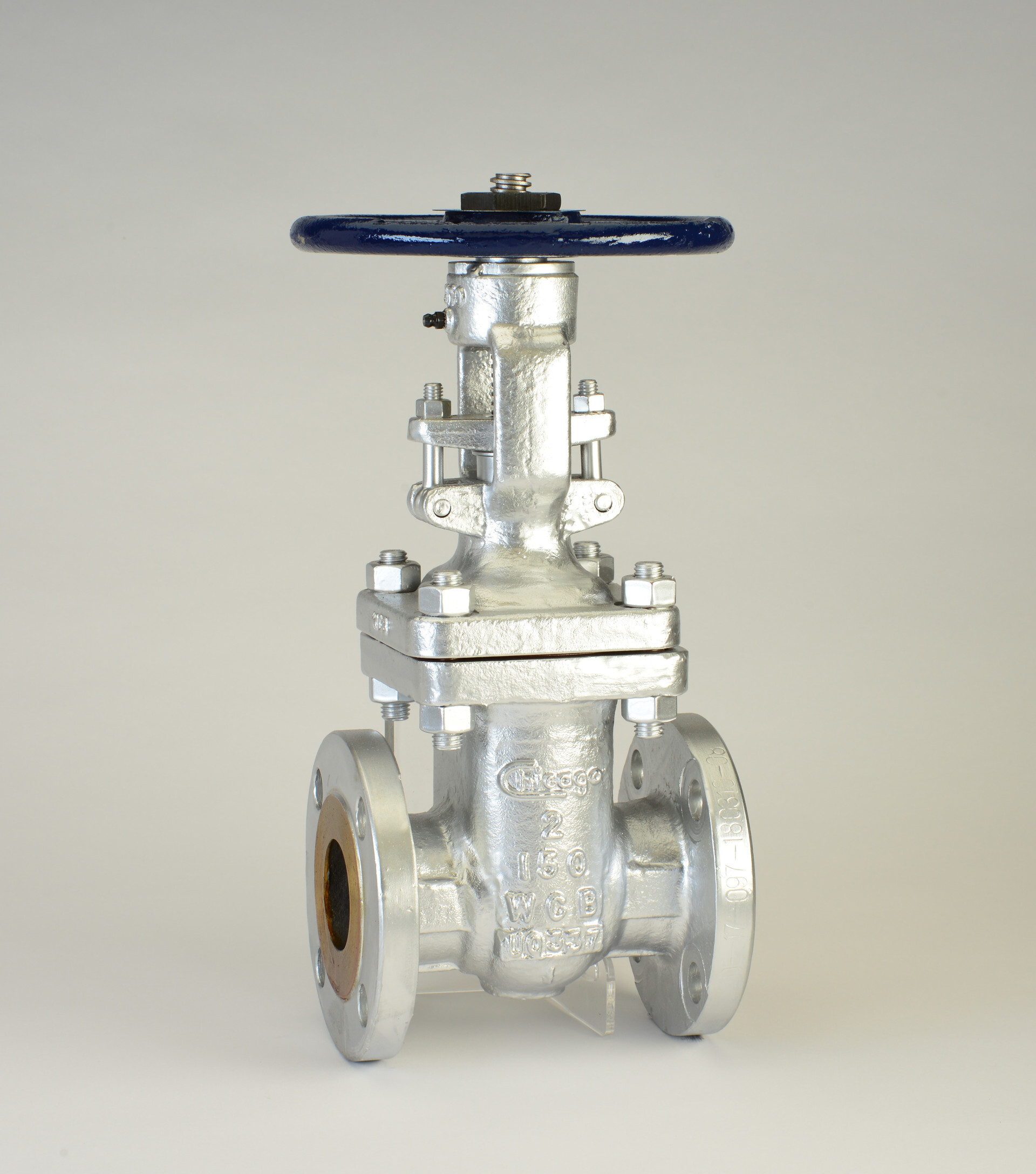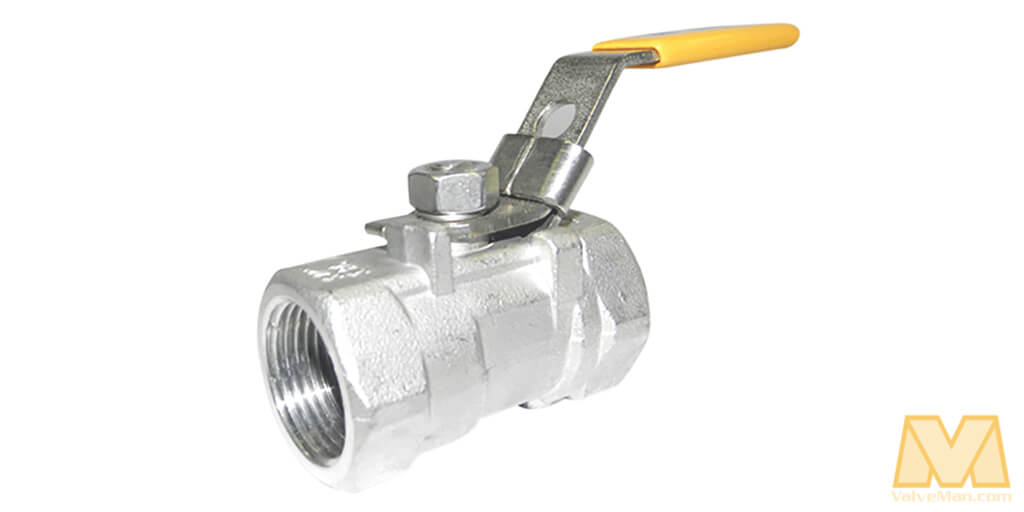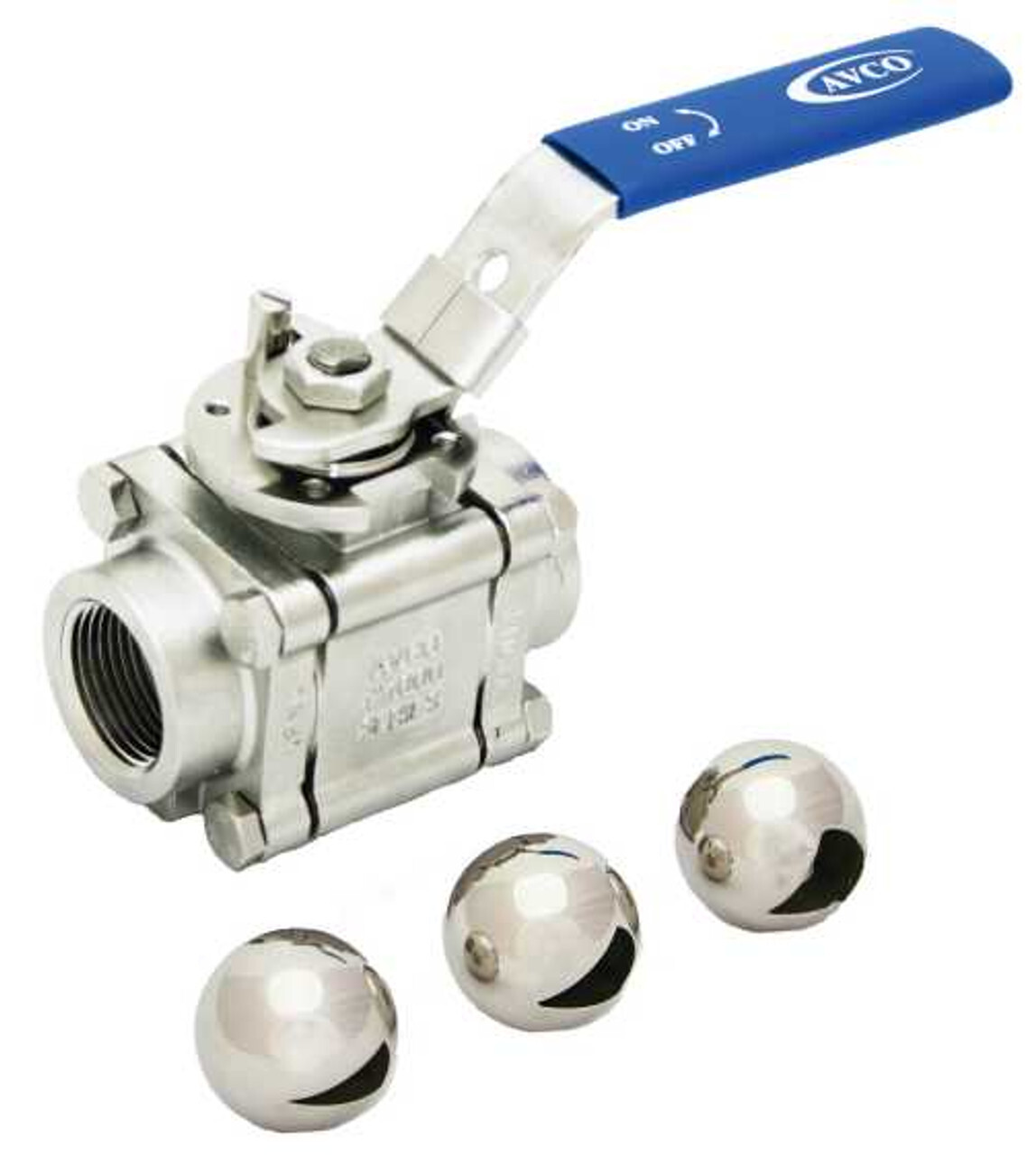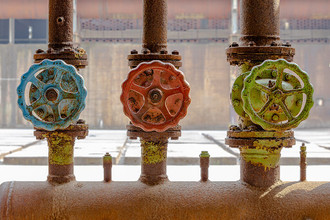Gate Valve vs Ball Valve Comparison Guide | ValveMan
Posted by Russ Bailey on Jul 1st 2025
Valves are widely used in industrial and manufacturing facilities, but they’re also used in utilities, commercial and residential settings. You’ll find valves as close as your home or car, and you’ll also find them as far away as the international space station! There are many, many types of valves, with two of the most common types found in service being ball valves and gate valves. With these valves largely serving the same purpose, a common question is which valve to choose between the two. To answer this question, let’s take a detailed look at the ins-and-outs of gate valves and ball valves.
What Is A Gate Valve?
A gate valve is a linear valve that controls the flow of fluid by raising or lowering the valve disc, also referred to as a ‘gate’, between open and closed positions. Gate valves are effectively used as shut-off or isolation valves, and are not suited to partial openings for flow regulation or throttling purposes.

Gate valves are widely used for isolation and shut-off applications in industrial facilities, power generation and water supply systems. In fact, gate valves have been used for hundreds of years. Modern gate valves typically comprise of a valve body, a gate element which slides up and down, a stem which is connected to the gate on one end and the valve handle or actuator on the other, and valve seats and seals which engage to create the level of sealing required. Gate valves are available in a broad range of design configurations and material specifications, to meet project and application specific requirements. Gate valves are commonly found in bulk infrastructure, such as power plants and large water supply lines.
What Is a Ball Valve?
A ball valve is a rotary valve that regulates fluid flow by turning a ball with a hollow bore through its centre, into and out of the flow path. Ball valves can effectively start or stop fluid flow with a quarter-turn or 90 degree rotation.

Ball valves comprise a valve body to house the valve internals, ball element for flow regulation, seats for effective sealing, and valve stem which connects the ball and actuator. Ball valves are known for their durability, reliability and simplicity, and are suited to frequent operation. Ball valves are a good choice for shut-off applications and may be used for moderate flow control, however, they lack precise flow control in throttling applications. Like gate valves, ball valve designs have evolved over time, with many configurations and specifications available, to suit a myriad of applications, ranging from superheated gases to cryogenic liquids, and everything in between.
Comparing Gate Valves and Ball Valves
Now that you’re familiar with gate and ball valve basics, let’s look at each valve’s functionality and identify some of the key differences between these valve types.
Flow Control Mechanics
Both ball valves and gate valves control fluid flow through a pipe, but they do so using different mechanisms. Gate valves raise or lower a gate element which opens or closes the passage through the valve, starting or stopping fluid flow, Gate valves are typically used for large diameter pipelines, with infrequent operation, for example as maintenance valves. Gate valves are slow opening and closing, particularly when compared to ball valves.
Ball valves make use of a ball element with a hole through its center to control the flow of fluids. The ball may be rotated to align the hole with the flow passage, allowing fluid flow through the valve. Ball valves are typically used for smaller diameter pipes, and are suited to frequent operation, for example as process valves. Ball valves provide a quick shut off, with a quarter-turn of the valve handle moving the valve from fully open to fully closed position.
Valve Flow Direction
Both ball valves and gate valves can be used for bi-directional flow applications. Gate valves are inherently capable of bidirectional flow, meaning they can effectively seal in both upstream and downstream directions. Most ball valves are bi-directional with double-end sealing designs, however some ball valves are uni-directional. Uni-directional valves often have a flow direction indicator (such as a flow arrow) on the valve body.
Valve Seal Capacity
Gate valves and ball valves are available in both soft and metal sealing configurations. Soft seated valves typically provide a 100% leak-tight seal, however these valves are not suited to extreme pressures and temperatures. They are also not suited to abrasive or ‘dirty’ fluids, which may damage the seats. Metal seated valves are suited to high pressure and high temperature applications, however there is typically an acceptable leakage rate allowed for metal seated valves. Metal seated valves generally offer superior durability and longevity in harsh environments.
Resilient seal gate valves are an example of soft seated gate valves, available with the valve disk encapsulated in a rubber based (or similar) polymer. Wedge-type gate valves are typically metal seated and are used for large, high pressure, high temperature and high flow applications. Soft seated ball valves utilize a resilient material, such as PTFE or other thermoplastics, to create a bubble-tight seal. Metal seated ball valves are available with a range of material trims, and are suited to demanding applications.
Valve Design and Construction Differences
The two main types of gate valve designs are wedge and parallel types. Wedge gate valves, which are the most common, consist of two inclined valve seats and an inclined gate. Parallel gate valves have parallel seats with a flat gate. An example of a parallel gate valve design is the knife gate valve, which is commonly used in waste water applications.
Gate valves may also be distinguished by their seat type (metal seated vs resilient seated), or by their stem design (rising spindle, non-rising spindle, and outside screw and yoke). Gate valves are generally bulkier, taking up more space than similar sized ball valves.
There are many types of ball valves available, with some design distinctions being full port or reduced port configuration, floating ball or trunnion mounted, single or split body types, two-way, three-way or multi-port connections, and segmented or V-port balls for control applications. Ball valves take up relatively less installation space than gate valves.
Valve Material
Both gate valves and ball valves are available in a range of materials. Standard materials for gate valve and ball valve bodies include cast iron, brass, bronze, ductile iron and cast steel. Specialized valves may be made from stainless steel, titanium or other ‘exotic’ metals and alloys. Plastic is also used as a material for residential, commercial and irrigation valves.
Similar to the valve body, trim for gate valves and ball valves may be selected from a broad range of metallic and non-metallic materials. These include bronze, brass, cast steel and stainless steel, or plastic options such as NBR, EPDM, Viton and PTFE. Valve trim and internal components must be carefully selected, taking into account the nature of the fluid and operating requirements. Aside from factors such as operating pressure and temperature ranges, phenomena such as pressure surges, water hammer, cyclic loading, vibrations, cavitation, corrosion and abrasion should not be neglected when specifying valve materials.
Applications
Gate valves are primarily suited to fluid shut-off and isolation applications, in bulk pipelines or process facilities. They are designed to fully start or stop flow, or to isolate sections of pipeline or equipment. Ball valves are also typically suited to on/off applications, and applications where quick opening and closing is required. Specialized flow control ball valves, known as segmented or v-port ball valves based on the profiled shape of the valve port, are suited to moderate flow control applications. For precise control, a globe valve, needle valve, or other control valve is required. While two-port ball valves are the most common, three-port or multi-port configurations allow for a broader range of flow control or flow mixing capability.

Both gate valves and ball valves are used across numerous industries, including manufacturing and processing, oil and gas, chemicals, pharmaceuticals, power generation, and water supply systems.
Are Ball Valves Better Than Gate Valves?
There is often debate in the valve world regarding the merits of different valves - a common topic is whether ball or gate valves are better. The simple answer is that there is no right answer! Each type of valve has advantages and disadvantages, so the best valve must be assessed on a case-by-case basis. Below are some factors to consider when comparing gate valves and ball valves for a particular project.
- Function: A ball valve is a quarter-turn valve that uses a hollow ball to control fluid flow. The ball is connected to a lever or handle to open and close the valve. On the other hand, a gate valve is a linear valve that uses a gate type element which slides up and down to control liquid or gas flow. The gate is opened and closed by turning a hand wheel that is connected to the gate via the valve stem.
- Cost: Ball valves are typically less expensive than gate valves, especially when comparing smaller valves.
- Durability: Both ball valves and gate valves are considered durable. Valve durability is also largely dependent on the valve spec, installation and operating conditions, and valve operation and maintenance.
- Application: Ball valves are typically better for applications where frequent, quick operation is required. Gate valves are suited to large bore pipes, and infrequent operation.
- Sealing: Both ball valves and gate valves are capable of leak-tight sealing. However, ball valves generally exhibit superior sealing performance than gate valves. This is why ball valves are typically preferred over gate valves for gas applications, where long-lasting, bubble tight seals are required.
- Opening speed and closing speed: Due to its quarter turn operation, a ball valve is suitable for applications needing fast operation. To move a gate valve from fully open to closed, the valve handwheel must be turned numerous times.
How To Choose: Gate Valve Vs Ball Valve
As we’ve already discussed, there are a number of factors to consider when choosing between ball valves and gate valves. Here are some critical selection criteria:
- Pressure: Both ball and gate valves can handle high pressures, but gate valve designs are inherently better suited for high-pressure applications.
- Temperature: Both ball valves and gate valves can handle high temperature applications, provided they are specified correctly.
- Flow: In general, gate valves have a higher flow capacity than ball valves.
- Ergonomics: Ball valves are less bulky and easier to operate than gate valves.
Based on the above criteria, one would typically recommend ball valves for low-pressure applications for small pipelines, where space is limited, or quick operation is required. Gate valves are better suited for high-pressure applications on large pipelines, and where the valves are infrequently used.
Need More Information?
So there you have it, both ball valves and gate valves are suited to fluid isolation and shut-off applications. If you’re still not sure which valve is the best fit for your project, get in touch with ValveMan right away. With technical expertise and reliable customer support a hallmark of our 60 year legacy, we’ll definitely be able to guide you to not just a valve, but the best valve solution for your needs.

